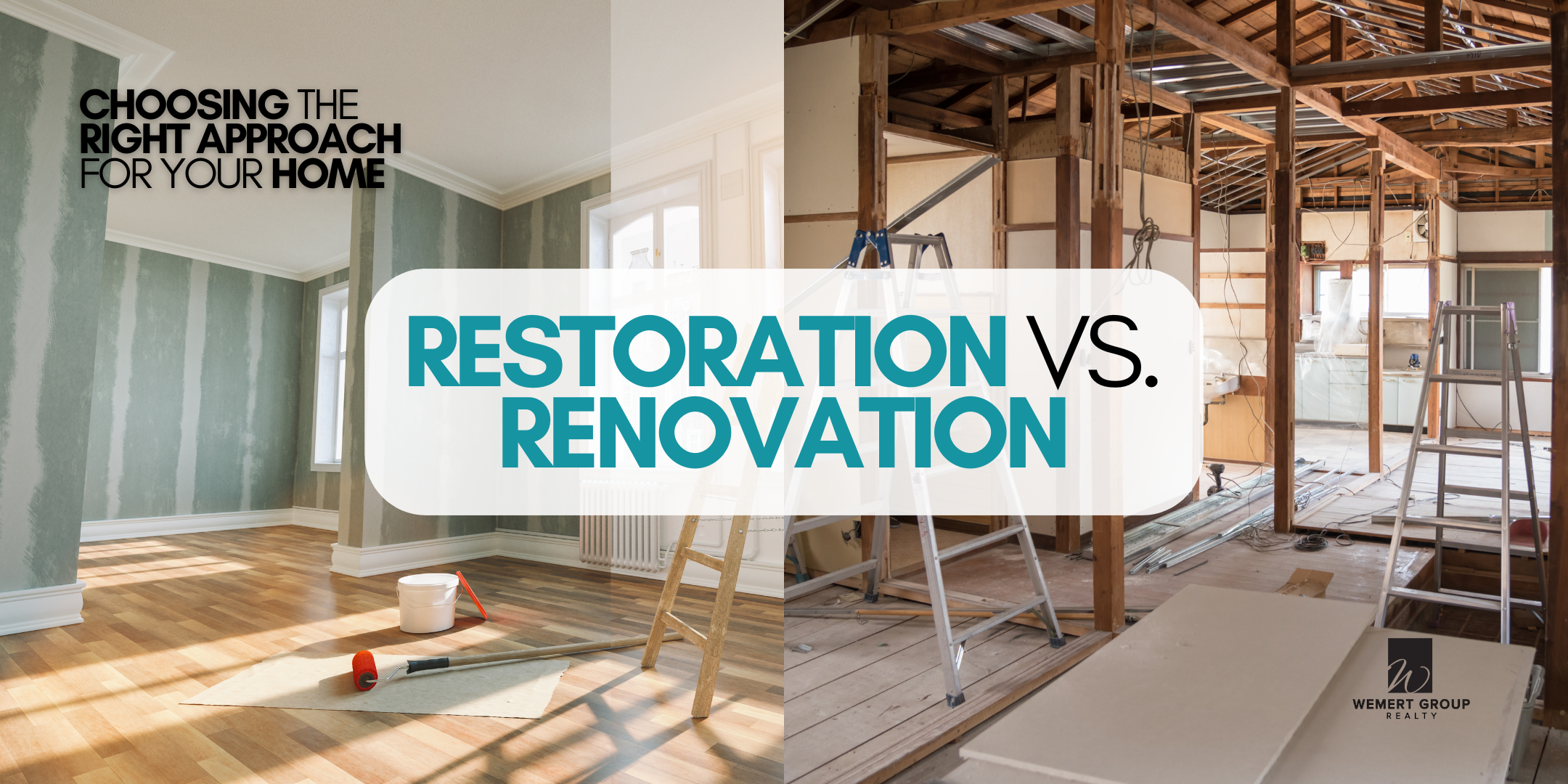When it comes to improving your home — whether to boost its value, personalize your space, or prepare for a sale — one important question often arises: should you renovate or restore?
While these two terms are often used interchangeably, they represent very different approaches to home improvement. Each has its own goals, challenges, and rewards — and choosing the right path depends on your home’s condition, your budget, and your long-term vision.
Let’s break down the difference between renovation and restoration, when each makes the most sense, and how to decide which direction is right for your home.
What is Renovation?
Renovation involves updating, improving, or modernizing a space. It may include structural changes, layout redesigns, or adding new features and materials that weren’t part of the original design. Renovation is often about bringing an older home up to date — both in style and function.
Common renovation projects:
- Tearing down walls for open-concept layouts
- Upgrading kitchens with new cabinets, countertops, and appliances
- Installing new flooring, lighting, or windows
- Adding smart home features or updated HVAC systems
- Finishing basements or adding square footage
Benefits of renovation:
- Increases home value — especially if you’re updating outdated finishes or layouts
- Improves functionality — modern floorplans and systems often better suit today’s lifestyles
- Allows personal customization — great for homeowners who want a fresh, modern look
Renovation is ideal for homeowners who want to reimagine a space, increase efficiency, or make it more appealing for the current market.
What is Restoration?
Restoration focuses on bringing a home back to its original state. It involves preserving and repairing existing architectural features, materials, and craftsmanship, especially in older or historically significant homes.
The goal of restoration is not to modernize, but to honor and maintain the original character and style of the home.
Common restoration projects:
- Refinishing original hardwood floors
- Repairing antique windows or woodwork
- Re-plastering original walls
- Preserving moldings, trims, or ceiling medallions
- Using historically accurate materials or colors
Benefits of restoration:
- Preserves history and character — maintains the integrity and charm of older homes
- May qualify for tax credits or grants — if the property is officially historic
- Appeals to niche buyers — especially those who appreciate unique or vintage architecture
Restoration is best for homes with historical value, architectural charm, or original details that are too rare or beautiful to replace.
🆚 Renovation vs. Restoration: Key Differences
|
Goal
|
Modernize and improve
|
Preserve original style and features
|
|
Style
|
Contemporary or current trends
|
Period-specific or original design
|
|
Materials
|
New, updated products
|
Authentic or historically accurate materials
|
|
Budget Impact
|
Often higher for large-scale modern upgrades
|
Can be high if sourcing rare or custom materials
|
|
Best For
|
Adding value, improving functionality
|
Retaining historical or unique charm
|
How to Decide Which Path Is Right for You
Not sure whether to renovate or restore? Here are a few questions to help guide your decision:
1. What is the age and condition of your home?
- A newer home without distinctive architecture is a great candidate for renovation.
- An older home with original crown moldings, tile work, or fireplaces might be better suited for restoration.
2. Is your home historically significant?
- If your home is on a historic registry or in a protected district, restoration may be required — or at least highly recommended.
- Renovations may be restricted in some historic neighborhoods.
3. What’s your long-term goal?
- Planning to sell? Renovations might yield a higher ROI and broader appeal.
- Keeping the home in the family? Restoration can preserve sentimental and historical value.
4. What’s your budget?
- Renovations can become costly depending on how extensive they are — especially if they include structural changes.
- Restoration may involve specialty contractors and materials, but can sometimes cost less if you’re keeping original elements intact.
⚖️ Can You Do Both?
Absolutely. Many homeowners choose a hybrid approach, especially with older homes. You might restore a home’s original hardwood floors and fireplace while renovating the kitchen and bathrooms for modern convenience.
The key is finding the right balance between respecting the home’s roots and making it livable and valuable for today’s lifestyle.
Final Thoughts
Whether you’re leaning toward a full renovation or a thoughtful restoration, the most important thing is to approach your project with clarity, care, and a clear plan. Every home has its own story — and your job as a homeowner is to decide whether that story needs a new chapter or a reintroduction to its original glory.
✨ Need expert advice on what adds the most value to your home? Whether you’re preparing to sell or thinking about upgrading, the team at Wemert Group Realty is here to help. We know what today’s buyers want — and we’re happy to guide you every step of the way.

